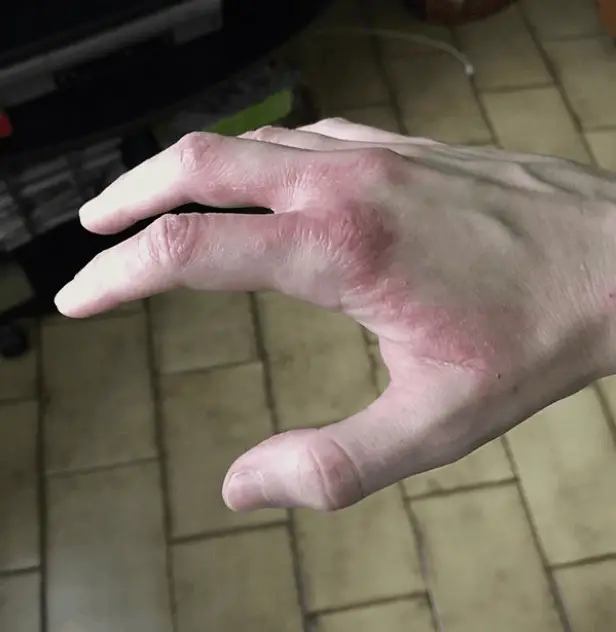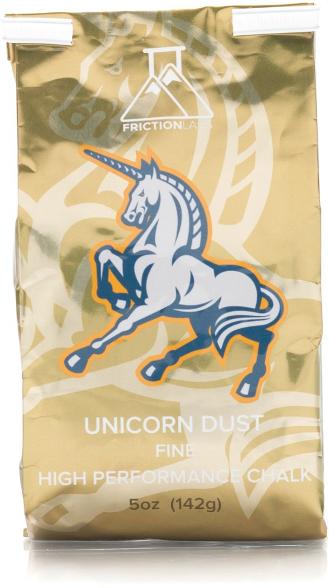
Eczema can be very painful, especially when it’s on your hands. You use your hands repetitively throughout the day, but nothing compares to when you’re on the climbing wall. Not only are you constantly using your hands when climbing, you’ll also most likely be using chalk. The problem is it’s hard to understand which climbing chalks are the best for eczema and what are the worst climbing chalks for eczema.
Don’t worry, after much research I’ve found the answer. Although I don’t have eczema, I’ve trawled through many different pages of the internet to find out which chalks work and don’t work for eczema and bad skin. We’ll also be talking about ways to help keep the skin on your hands in the most optimum shape it can be.
The best climbing chalks for eczema are your standard chalks without the added, harmful drying agents if possible. The most recommended climbing chalk for eczema is Friction Labs Unicorn Dust. Although slightly pricey, it does not contain any additives or drying agents You may think this will hinder your climbing performance but it doesn’t. This climbing chalk is renowned for its high-level performance. The Friction Labs Unicorn Dust is by far the best chalk on the market, not only for eczema but in general.
Let’s have a look at this climbing chalk, then talk about the types of chalks you should avoid and I’ll also give you a skin care routine that you should use after you’ve been climbing.
Friction Labs Unicorn Dust
If you’re willing to spend a bit more for the best chalking experience possible while keeping your eczema at bay , I’d go for the FrictionLabs Unicorn Dust Fine Chalk. Before I tried this stuff I always thought it was way too expensive for a chalk, surely it can’t be that good compared to most other brands. Eventually I bought a pack just to try it out because I’d heard so many climbers go on about how good it was. And the only times I’ve used something different since I first bought a pack is when it’s been out of stock. If you’re a frequent climber then I would seriously consider buying this stuff, not only because it’s good for eczema but because it’s probably the best chalk out there today.
FrictionLabs boasts that their Unicorn Dust has no harmful drying agents or additives, giving you the healthiest chalk powder for your hands. They believe they have a “New Standard in Chalk”. They also say that even though they use no drying agents, this works better than those that do. Their motto for this product is “Chalk Up Less, Get Better Grip, Send More” and to be honest with you I can’t fault them. I found that I didn’t need to chalk up as much with this product, so although you are spending a bit more you’re using less chalk over time.
In terms of texture and application, the chalk is very silky and easily gives you a nice even layer across your hands. The powder to chunk ratio was pretty much perfect in my opinion – I like around a 70% to 30% powder to chunk ratio. The powder itself is incredibly fine. I have naturally dry hands and most chalks make my hands feel dry immediately after a session but, although I still found it with this product, I only found it very slightly. It’s also the most secure I’ve felt on a wall with my hands, but maybe that’s just placebo because of how impressed I already was with the chalk. I also found that my hands didn’t feel as dry the next day as they usually did after a climbing session.
The real question is, is it worth the money? In my personal opinion yes it is, especially if you want a chalk that isn’t going to aggravate eczema.
What Type of Climbing Chalks Should You Avoid if You Have Eczema
The worst types of climbing chalks have aggressive drying agents and additives. One such climbing chalk that has these is the Metolius Superchalk. Although this chalk is great for performance, it dries your hands out massively. If you have eczema avoid this chalk at all costs.
Another thing to mention is liquid chalk. Liquid chalk, like hand sanitizer, contains isopropyl alcohol. Isopropyl alcohol disrupts the oil on your skin which dries out your hands. If you have eczema the last thing you want to do is make your hands ever drier than they already are. Therefore you should avoid liquid chalk if you don’t want your eczema to get worse.
How to Care for the Skin on Your Hands before Climbing
Before you climb you should take care of your skin if you have eczema. You should moisturize your hands with a hydrating moisturizer such as Vaseline intensive care. This moisturizer is known to be one of the best moisturizers for eczema. Use this around 20 minutes before you climb to hydrate your skin before your chalk it up.
How to Care for the Skin on Your Hands after Climbing
Chalk is specifically used when we climb to absorb moisture from your hands so that you aren’t as likely to slip when you grab a hold. If you don’t wash chalk off your hands you’ll allow it to keep doing its job – absorbing moisture – which means your hands will keep drying up. This allows for your eczema to become even worse.
Once you’ve washed off the chalk and cleaned your climbing hands after the session, you should moisturize your palm, the back of your hands and your fingers with a balm, oil or lotion.
I’ve tried a few different climbing balms as I have seriously dry skin on my hands. The best I’ve found is actually one of the more affordable ones from climbOn. It’s more than half the price of the one from Climbskin and I think it does just as good of a job.
If my hands are really crusty and dry then I’ll bring out the big guns: petroleum jelly (vaseline). I cover my hands in this and put latex/rubber gloves on for about 20 minutes. Then I take them off and repeat this for a total of 3 times. You’ll be amazed at how much smoother your hands are after doing this. This is my secret weapon.
If you aren’t drinking enough water your skin will be more likely to crack because it will be more dry. Being hydrated also improves your skin’s ability to heal. Skin is also more resilient for those who drink more water than those who are found to be dehydrated. Download a water app on your phone if you have trouble remembering to drink throughout the day. And yes, I mean water, not soda.
What Makes a Good Climbing Chalk?
So, what makes good climbing chalk?
- Texture. Climbing chalks should have a nice texture, the silkier the better. This is so it feels comfortable on the hands.
- Powder to chalk ratio. This is also a matter of opinion, however most of the time people want the best of both worlds.
- Short term hand dryness. Good climbing chalks obviously don’t make your hands feel too dry. If you have eczema, this is one of the main aspects you should consider when buying chalk.
- Chalk application. Application of chalk should be easy. Some chalks take a lot of time to apply because of moisture, or lack of it.
- Long term hand dryness. The better climbing chalks won’t take too much moisture away from hands in the long term. Another aspect you should consider if you have eczema.
- Performance and wall security. How secure the chalk makes you feel on the wall is one of the most important aspects of climbing chalk. The whole point about using climbing chalk is to increase your climbing performance by stopping your hands slipping off holds.

